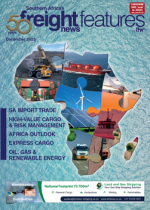In a significant stride towards a sustainable energy future, Africa has seen a remarkable surge in the installed capacity of wind energy since the turn of the century. According to the International Renewable Energy Agency (Irena), the continent's wind energy capacity reached an estimated 6.5 gigawatts (GW) by the end of 2020, but according to the Global Wind Energy Council (GWEC), recent projections indicate this will have increased to 9GW by the end of 2023.To date, South Africa, Morocco, and Egypt have been the primary players in this green revolution, boasting the lion's share of the installed wind capacity. These nations have been at the forefront of adopting renewable energy solutions, with favourable policies and incentives driving the rapid growth of wind infrastructure. Kenya, Ethiopia, and Tunisia, identified as secondary markets by Irena, have also made significant strides in harnessing wind power, contributing to the overall surge in capacity on the continent.According to a recent GWEC report, the wind energy landscape in Africa is evolving quickly, with additional installations in Senegal, Reunion, Nigeria, Tanzania, and Djibouti. These emerging markets signify a growing awareness and commitment to transitioning towards cleaner and more sustainable energy sources.At present, North Africa leads in terms of total installed capacity due to the inf luence and early onset of renewable energy programmes in Egypt and Morocco, which saw initial utility-scale wind project commissioning back in 1988 and 2000, respectively. Southern Africa, dominated by wind farms in South Africa largely installed through the Renewable Energy Independent Power Producer Programme (REIPPP) scheme, has the second-highest installed wind capacity. Eastern Africa comes in third, with several operational wind farms in Ethiopia and Kenya. The GWEC has identified 140 projects planned across Africa representing 86GW of planned new wind capacity. These included projects in several countries new to wind such as Angola, Chad, Mali, Ghana, Sudan, Niger, Madagascar, Uganda, Zambia, and Malawi According to the GWEC, Egypt looks set to dominate the wind sector in Africa over the coming decade considering its significant technical potential, existing installed capacity, established local manufacturing industry for steel towers, electrical switchgear, and cabling, as well as the numerous recently announced projects. At COP27 in Sharm El Sheikh the Egyptian government announced it had signed an agreement for one of the world’s largest wind farms, a $10-billion, 10GW wind farm in the Gulf of Suez region. The development of the wind energy sector holds major opportunity for the project cargo and heavylift sector as the intricate nature of these projects creates a demand for specialised logistics and transport solutions.

